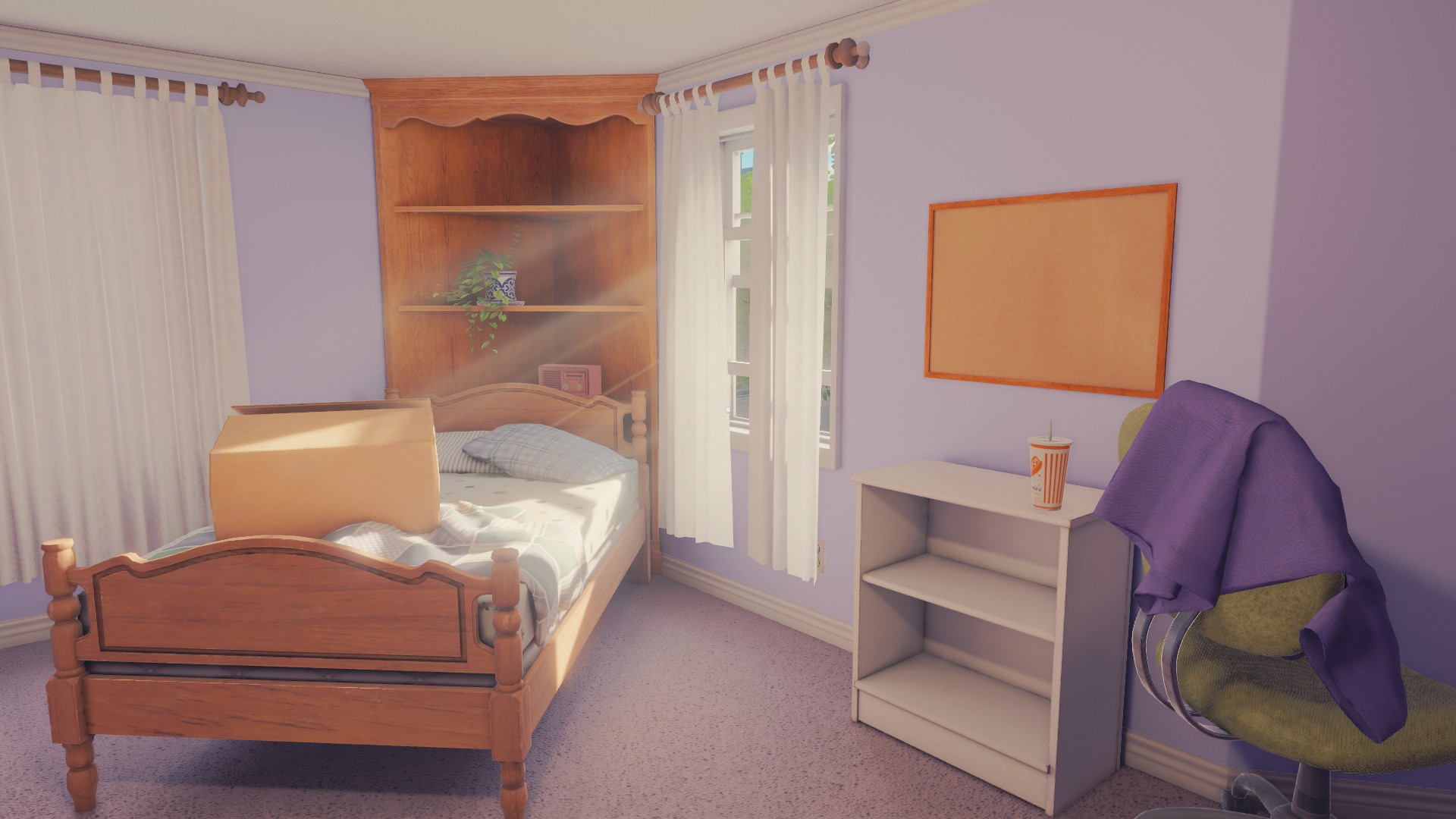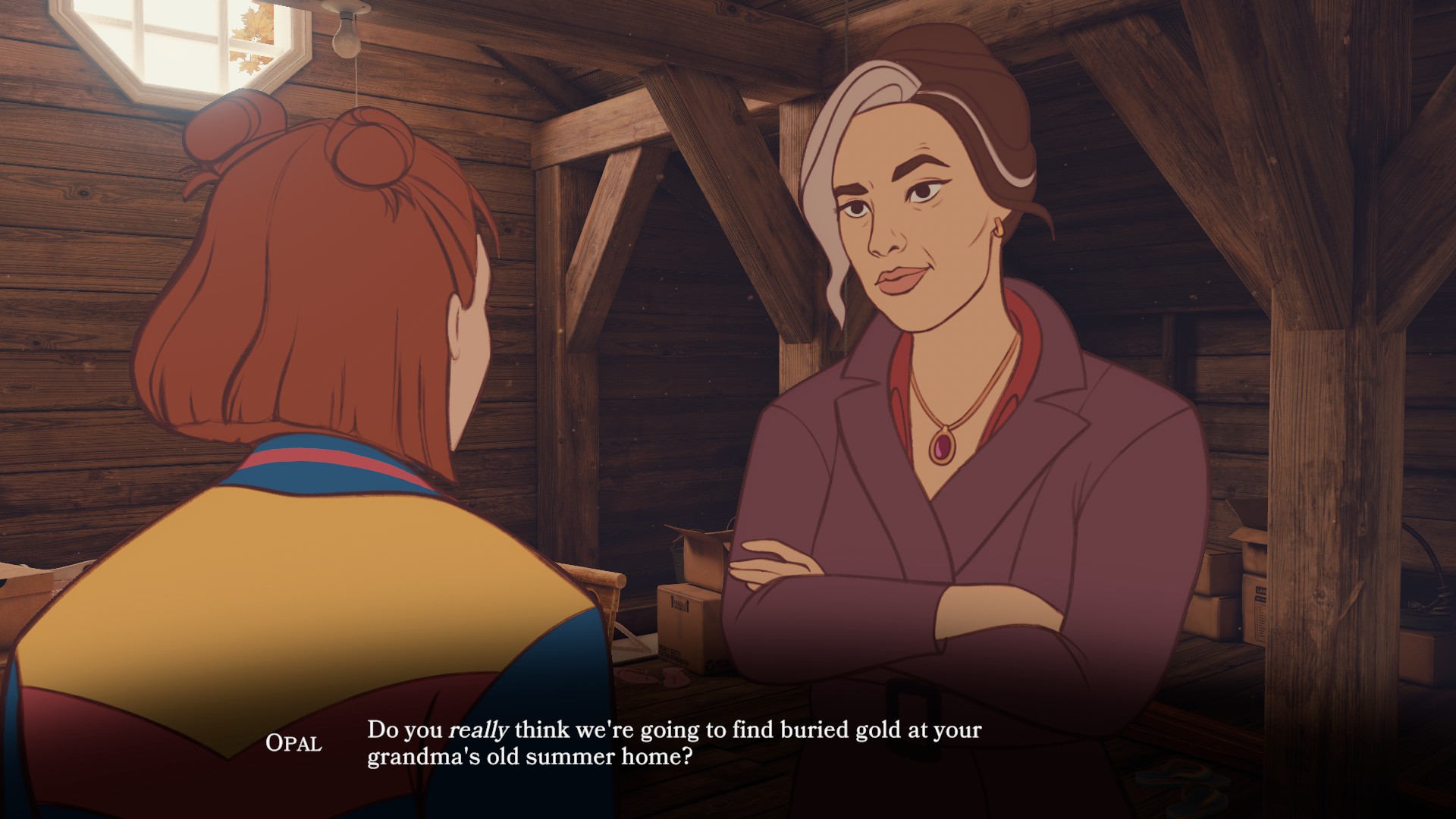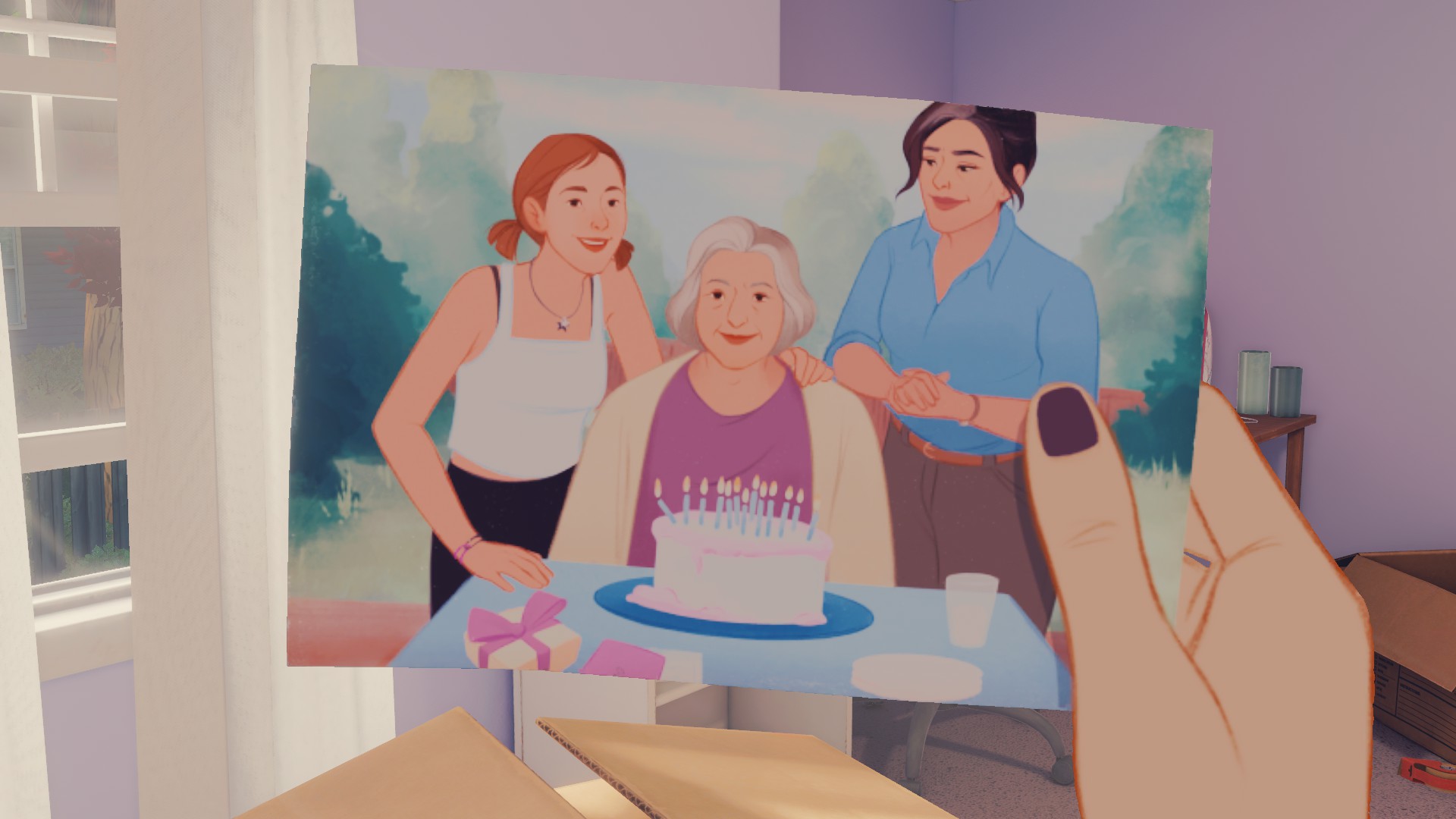Our Verdict
Pleasant but rarely compelling characters undermine this spiritual sequel to Gone Home.
PC Gamer's got your back
What is it? A narrative adventure created by a studio that split off from Fullbright, the developer of Gone Home and Tacoma.
Release date Mar 28, 2024
Expect to pay TBA
Developer Open Roads Team
Publisher Annapurna Interactive
Reviewed on RTX 2070, i7-10750H, 16GB RAM
Steam Deck TBA
Link Official site
It may be a cliché, but surely a road trip story is more about the journey than the destination? It’s the bumps on the highway that lodge in the memory, and how they change the central characters that determine the end result. While Open Roads does follow this trajectory in theory, as teen protagonist Tess and her mother Opal navigate life’s troubles on a weekend away, its bumps barely test the shock absorbers, and their destination seems clear from the start.
Indeed, it might be said that the story behind the development of Open Roads is more momentous than the one it’s telling. Development is credited to the Open Roads Team, a unit that detached from original developer Fullbright after reports of studio founder Steve Gaynor’s toxic behaviour. From that perspective, the game’s release itself feels like a happy ending, and it’s one that should interest acolytes of Fullbright’s previous narrative adventures, Gone Home and Tacoma. Tonally, this is especially close to the former, thanks to both its slice-of-life drama and 2003 setting, although Tess and Opal aren’t so much going home as searching for a new one.
The shared DNA is felt in a story that's told primarily through objects you can pick up and examine. From the opening scene, where you guide Tess around her bedroom packing her belongings, that old adage "show, don’t tell" is on display, as each item examined adds insight into the person you’re controlling. By the time you’ve grabbed everything not nailed down in Tess’s room and dropped it into the packing box, you have a pretty good idea what’s going on in her life, with almost no direct exposition needed.
As for what is going on: Tess’s grandmother has recently died after a period of illness, and since Tess and Opal had been living with her and the bank now has dibs on her triple-mortgaged home, they need a new place to dwell. Where that might be is still up in the air, with Tess’ father living across the US and Opal not in the healthiest financial position. It’s almost a relief, then, when the pair discover a hidden case amongst grandma’s stuff suggesting a secretive past, giving them an excuse to hit the road in the hope of unpicking a new mystery.
What follows is a series of sequences set in the places mother and daughter end up visiting to learn the truth, interspersed with scenes in their car. When you arrive somewhere, starting with the family’s long-abandoned summer house, you amble about picking up and looking at things, seeking keys to open locks and objects that fill in pieces of forgotten or buried family backstory. Find something of note and you can summon mum for a brief conversation, which usually involves a few dialogue choices. You can also chat in the car, or send texts to dad and your bestie on your flip phone before the next stop.

Other than the increased fidelity and variety of locations, not much about what you're actually doing has changed in the decade since Gone Home.
Locations such as grandma’s house and the summer home are realised in far more detail than Gone Home’s equivalent setting. Superficial items such as dusty TV guides or a bath seat imply the joys and sorrows of everyday life, and you truly feel you’re sorting through someone’s past. Yet, other than the increased fidelity and variety of locations, not much about what you're actually doing has changed in the decade since Gone Home, and that includes many of that game's more awkward contrivances. For the most part, letters, postcards and notes form your breadcrumb trail through the plot, a lot of it relying on the notion that grandma left her highly confidential correspondence scattered about for people to find, rather than bundled up together somewhere secure.
To some degree, the relationship between Tess and Opal manages to paper over such cracks. Talking through your finds pulls memories to the surface or forces the duo to reevaluate what they thought they knew. Your input, while not impactful to the plot, also feels natural in the context of their close yet strained bond, for example triggering arguments if you poke at raw nerves. A flowing script and high-calibre voice performances from Kaitlyn Dever and Keri Russell are a boon here too, building a convincing portrait of two people who aren’t short of love, but are still struggling with loss and anger.
By the same token, though, all the talk does stretch that "show don’t tell" philosophy, since found documents are often quickly explained by Opal rather than left to your interpretation. There’s a lack of continuity between exchanges, too, because they have no set order and effectively play out as discrete scenes. One might end in hurtful barbs only for the next to be jokey or nostalgic, with no residue of animosity carried over. Generously, you might say that Tess and Opal are used to tolerating the other’s foibles, but jarring transitions remain nonetheless.

Sure, they have their quirks, they’ve made bad decisions, but they’re basically just nice middle-class folk who need to communicate better.
Such tolerant dispositions also underline a deeper issue—while these characters feel authentic, they aren’t especially interesting. Sure, they have their quirks, they’ve made bad decisions, but they’re basically just nice middle-class folk who need to communicate better. One of Gone Home’s strengths as a story was that it only slowly revealed what it was, its central focus initially disguised. In Open Roads, you may not know exactly what you’ll discover, but its themes are nigh-on displayed in neon lettering at the entrance. Opal and Tess hide things from each other, but learn a valuable lesson as they uncover the impact of grandma’s secrets. It’s the gaming equivalent of a Hallmark family drama.
The road trip itself, the scenes between locations, are particularly guilty of simply being a venue for too-obvious dialogue. Some of the more effective moments of characterisation occur in scenes where Tess and Opal have to plan and negotiate how to circumvent an obstacle, such as a collapsed water tank that blocks access to part of the summer house. More such incidents on the road—perhaps a flat tire?—could surely have replaced the handful of conversations that take place instead. Without any of that variety, Open Roads is a road trip focused entirely on interiors, failing to make the most of the genre. There’s barely a glimpse of the highways, landscapes or people seen along the way to reflect the characters’ own momentum, changes, and new horizons.
As Tess and Opal’s journey concludes after just two hours, the question you may be left with is whether it was worth embarking in the first place. Yes, this is a story that feels relatable in tackling subjects such as grief, abandonment and regret, but perhaps there’s such a thing as too relatable—that is, too ordinary to stand out at all, especially when the telling is ultimately so sentimental. Back in 2013, when the so-called walking sim was still finding its feet, Open Roads’ emotional notes might have created waves. But in the wake Life Is Strange, As Dusk Falls, it feels like it falls short of its intended destination.
Pleasant but rarely compelling characters undermine this spiritual sequel to Gone Home.


